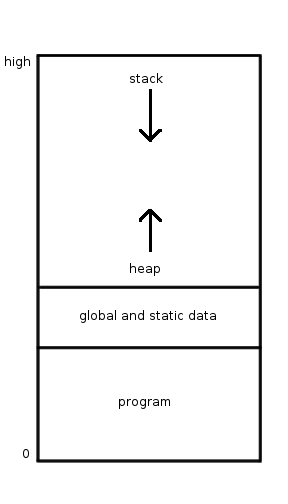|
Oberon-2
Oberon-2 is an extension of the original Oberon programming language that adds limited reflective programming (reflection) and object-oriented programming facilities, open arrays as pointer base types, read-only field export, and reintroduces the FOR loop from Modula-2. It was developed in 1991 at ETH Zurich by Niklaus Wirth and Hanspeter Mössenböck, who is now at Institut für Systemsoftware (SSW) of the University of Linz, Austria. Oberon-2 is a superset of Oberon, is fully compatible with it, and was a redesign of Object Oberon. Oberon-2 inherited limited reflection and single inheritance ("type extension") without the interfaces or mixins from Oberon, but added efficient virtual methods ("type bound procedures"). Method calls were resolved at runtime using C++-style virtual method tables. Compared to fully object-oriented languages like Smalltalk, in Oberon-2, basic data types and classes are not objects, many operations are not methods, there is no message pass ... [...More Info...] [...Related Items...] OR: [Wikipedia] [Google] [Baidu] |
Oberon (programming Language)
Oberon is a general-purpose programming language first published in 1987 by Niklaus Wirth and the latest member of the Wirthian family of ALGOL-like languages ( Euler, ALGOL W, Pascal, Modula, and Modula-2). Oberon was the result of a concentrated effort to increase the power of Modula-2, the direct successor of Pascal, and simultaneously to reduce its complexity. Its principal new feature is the concept of data type extension of record types. It permits constructing new data types on the basis of existing ones and to relate them, deviating from the dogma of strict static typing of data. Type extension is Wirth's way of inheritance reflecting the viewpoint of the parent site. Oberon was developed as part of the implementation of an operating system, also named Oberon at ETH Zurich in Switzerland. The name was inspired both by the Voyager space probe's pictures of the moon of the planet Uranus, named Oberon, and because Oberon is famous as the king of the elves. Obero ... [...More Info...] [...Related Items...] OR: [Wikipedia] [Google] [Baidu] |
Component Pascal
Component Pascal is a programming language in the tradition of Niklaus Wirth's Pascal, Modula-2, Oberon and Oberon-2. It bears the name of the language Pascal and preserves its heritage, but is incompatible with Pascal. Instead, it is a minor variant and refinement of Oberon-2 with a more expressive type system and built-in string support. Component Pascal was originally named Oberon/L, and was designed and supported by a small ETH Zürich spin-off company named Oberon microsystems. They developed an integrated development environment (IDE) named BlackBox Component Builder. Since 2014, development and support has been taken over by a small group of volunteers. The first version of the IDE was released in 1994, as ''Oberon/F''. At the time, it presented a novel approach to graphical user interface (GUI) construction based on editable forms, where fields and command buttons are linked to exported variables and executable procedures. This approach bears some similarity to the cod ... [...More Info...] [...Related Items...] OR: [Wikipedia] [Google] [Baidu] |
Modula-2
Modula-2 is a structured, procedural programming language developed between 1977 and 1985/8 by Niklaus Wirth at ETH Zurich. It was created as the language for the operating system and application software of the Lilith personal workstation. It was later used for programming outside the context of the Lilith. Wirth viewed Modula-2 as a successor to his earlier programming languages Pascal and Modula. The main concepts are: # The module as a compiling unit for separate compiling # The coroutine as the basic building block for concurrent processes # Types and procedures that allow access to machine-specific data The language design was influenced by the Mesa language and the Xerox Alto, both from Xerox PARC, that Wirth saw during his 1976 sabbatical year there. Page 4. The computer magazine ''Byte'' devoted the August 1984 issue to the language and its surrounding environment. Wirth created the Oberon series of languages as the successor to Modula-2, while others (particularl ... [...More Info...] [...Related Items...] OR: [Wikipedia] [Google] [Baidu] |
Active Oberon
Active Oberon is a general purpose programming language developed during 1996–1998 by the group around Niklaus Wirth and Jürg Gutknecht at the Swiss Federal Institute of Technology in Zürich (ETH Zurich). It is an extension of the programming language Oberon (programming language), Oberon. The extensions aim at implementing active Object (computer science), objects as expressions for parallelism. Compared to its predecessors, Oberon and Oberon-2, Active Oberon adds objects (with object-centered access protection and local activity control), system-guarded assertions, preemptive priority scheduling and a changed Syntax (programming languages), syntax for Method (computer programming), methods (named ''Oberon-2#Type-bound procedures, type-bound procedures'' in Oberon vocabulary). Objects may be ''active'', which means that they may be Thread (computer science), threads or Process (computer science), processes. Unlike Java (programming language), Java or C Sharp (programming lang ... [...More Info...] [...Related Items...] OR: [Wikipedia] [Google] [Baidu] |
Niklaus Wirth
Niklaus Emil Wirth ( IPA: ) (15 February 1934 – 1 January 2024) was a Swiss computer scientist. He designed several programming languages, including Pascal, and pioneered several classic topics in software engineering. In 1984, he won the Turing Award, generally recognized as the highest distinction in computer science, "for developing a sequence of innovative computer languages". Early life and education Niklaus Emil Wirth was born in Winterthur, Switzerland, on 15 February 1934. He was the son of Hedwig (née Keller) and Walter Wirth, a high school teacher. Wirth studied electronic engineering at the Federal Institute of Technology, Zürich (ETH Zürich) from 1954 to 1958, graduating with a Bachelor of Science (B.S.) degree. In 1960, he earned a Master of Science (M.Sc.) from Université Laval in Quebec. Then in 1963, he was awarded a PhD in electrical engineering and computer science (EECS) from the University of California, Berkeley, supervised by computer design pione ... [...More Info...] [...Related Items...] OR: [Wikipedia] [Google] [Baidu] |
Object Oberon
Object Oberon is a programming language which is based on the language Oberon with features for object-oriented programming. Oberon-2 Oberon-2 is an extension of the original Oberon programming language that adds limited reflective programming (reflection) and object-oriented programming facilities, open arrays as pointer base types, read-only field export, and reintroduces th ... was essentially a redesign of Object Oberon. References {{Prog-lang-stub Modula programming language family Oberon programming language family Object-oriented programming languages ... [...More Info...] [...Related Items...] OR: [Wikipedia] [Google] [Baidu] |
Modular Programming
Modular programming is a software design technique that emphasizes separating the functionality of a program into independent, interchangeable modules, such that each contains everything necessary to execute only one aspect or "concern" of the desired functionality. A module interface expresses the elements that are provided and required by the module. The elements defined in the interface are detectable by other modules. The implementation contains the working code that corresponds to the elements declared in the interface. Modular programming is closely related to structured programming and object-oriented programming, all having the same goal of facilitating construction of large software programs and systems by decomposition into smaller pieces, and all originating around the 1960s. While the historical usage of these terms has been inconsistent, "modular programming" now refers to the high-level decomposition of the code of an entire program into pieces: structured progra ... [...More Info...] [...Related Items...] OR: [Wikipedia] [Google] [Baidu] |
Imperative Programming
In computer science, imperative programming is a programming paradigm of software that uses Statement (computer science), statements that change a program's state (computer science), state. In much the same way that the imperative mood in natural languages expresses commands, an imperative program consists of command (computing), commands for the computer to perform. Imperative programming focuses on describing ''how'' a program operates step by step (with general order of the steps being determined in source code by the placement of statements one below the other), rather than on high-level descriptions of its expected results. The term is often used in contrast to declarative programming, which focuses on ''what'' the program should accomplish without specifying all the details of ''how'' the program should achieve the result. Procedural programming Procedural programming is a type of imperative programming in which the program is built from one or more procedures (also termed s ... [...More Info...] [...Related Items...] OR: [Wikipedia] [Google] [Baidu] |
MacOS
macOS, previously OS X and originally Mac OS X, is a Unix, Unix-based operating system developed and marketed by Apple Inc., Apple since 2001. It is the current operating system for Apple's Mac (computer), Mac computers. Within the market of Desktop computer, desktop and laptop computers, it is the Usage share of operating systems#Desktop and laptop computers, second most widely used desktop OS, after Microsoft Windows and ahead of all Linux distributions, including ChromeOS and SteamOS. , the most recent release of macOS is MacOS Sequoia, macOS 15 Sequoia, the 21st major version of macOS. Mac OS X succeeded classic Mac OS, the primary Mac operating systems, Macintosh operating system from 1984 to 2001. Its underlying architecture came from NeXT's NeXTSTEP, as a result of NeXT#1997–2006: Acquisition by Apple, Apple's acquisition of NeXT, which also brought Steve Jobs back to Apple. The first desktop version, Mac OS X 10.0, was released on March 24, 2001. Mac ... [...More Info...] [...Related Items...] OR: [Wikipedia] [Google] [Baidu] |
Zonnon
Zonnon is a general purpose programming language in the line or family of the preceding languages Pascal, Modula, and Oberon. Jürg Gutknecht is the author. Its conceptual model is based on objects, definitions, implementations, and modules. Its computing model is concurrent, based on active objects which interact via syntax controlled dialogs. The language is being developed at ETH Zürich Institute for Computer Systems by Professor Jürg Gutknecht. Zonnon introduces the concept of 'active objects' which are used to represent real world concurrent objects within computer programs. The Zonnon Language Report was written by Brian Kirk (director at Robinsons Associates), and David Lightfoot (Oxford Brookes University) working with Gutknecht (ETH, Zürich) and Dr. Eugene Zueff (Евгений Зуев) (Moscow State University). The first book about Zonnon was published by the N. I. Lobachevsky State University of Nizhny Novgorod (a.k.a., Nizhni Novgorod State University). [...More Info...] [...Related Items...] OR: [Wikipedia] [Google] [Baidu] |
Nim (programming Language)
Nim is a general-purpose, multi-paradigm, statically typed, compiled high-level system programming language, designed and developed by a team around Andreas Rumpf. Nim is designed to be "efficient, expressive, and elegant", supporting metaprogramming, functional, message passing, procedural, and object-oriented programming styles by providing several features such as compile time code generation, algebraic data types, a foreign function interface (FFI) with C, C++, Objective-C, and JavaScript, and supporting compiling to those same languages as intermediate representations. Description Nim is statically typed. It supports compile-time metaprogramming features such as syntactic macros and term rewriting macros. Term rewriting macros enable library implementations of common data structures, such as bignums and matrices, to be implemented efficiently and with syntactic integration, as if they were built-in language facilities. Iterators are supported and can be used as fi ... [...More Info...] [...Related Items...] OR: [Wikipedia] [Google] [Baidu] |
Go (programming Language)
Go is a high-level programming language, high-level general purpose programming language that is static typing, statically typed and compiled language, compiled. It is known for the simplicity of its syntax and the efficiency of development that it enables by the inclusion of a large standard library supplying many needs for common projects. It was designed at Google in 2007 by Robert Griesemer, Rob Pike, and Ken Thompson, and publicly announced in November of 2009. It is syntax (programming languages), syntactically similar to C (programming language), C, but also has memory safety, garbage collection (computer science), garbage collection, structural type system, structural typing, and communicating sequential processes, CSP-style concurrency (computer science), concurrency. It is often referred to as Golang to avoid ambiguity and because of its former domain name, golang.org, but its proper name is Go. There are two major implementations: * The original, Self-hosting (compi ... [...More Info...] [...Related Items...] OR: [Wikipedia] [Google] [Baidu] |


